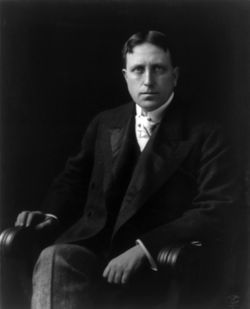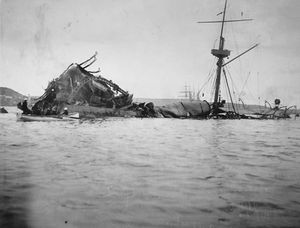How did Yellow Journalism lead to the Spanish-American War
Yellow journalism was a style of newspaper reporting that emphasized sensationalism over facts. During its heyday in the late 19th century, it was one of many factors that helped push the United States and Spain into war in Cuba and the Philippines, leading to overseas territory by the United States.
Yellow Journalism named after a cartoon
The term originated in the competition over the New York City newspaper market between major newspaper publishers Joseph Pulitzer and William Randolph Hearst. At first, yellow journalism had nothing to do with reporting, but instead derived from a popular cartoon strip about the life in New York’s slums called Hogan’s Alley, drawn by Richard F. Outcault. Published in color by Pulitzer’s New York World, the comic’s most well-known character came to be known as the Yellow Kid, and his popularity accounted in no small part for a tremendous increase in sales of the World.
In 1896, to boost sales of his New York Journal, Hearst hired Outcault away from Pulitzer, launching a fierce bidding war between the two publishers over the cartoonist. Hearst ultimately won this battle, but Pulitzer refused to give in and hired a new cartoonist to continue drawing the cartoon for his paper. This battle over the Yellow Kid and a greater market share gave rise to the term yellow journalism.
Once the term had been coined, it extended to the two publishers' sensationalist style in their profit-driven coverage of world events, particularly developments in Cuba. Cuba had long been a Spanish colony, and the revolutionary movement, which had been simmering on and off there for much of the 19th century, intensified during the 1890s. Many in the United States called upon Spain to withdraw from the island, and some even gave material support to the Cuban revolutionaries. Hearst and Pulitzer devoted more and more attention to the Cuban struggle for independence, at times accentuating the harshness of Spanish rule or the nobility of the revolutionaries, and occasionally printing rousing stories that proved to be false. This sort of coverage, complete with bold headlines and creative drawings of events, sold many papers for both publishers.
Newpaper Publishers push for War with Spain
In terms of both intensity and influence, the peak of yellow journalism came in early 1898, when a U.S. battleship, Maine, sunk in Havana harbor. The naval vessel had been sent there not long before in a display of U.S. power and, in conjunction with the planned visit of a Spanish ship to New York, an effort to defuse growing tensions between the United States and Spain. On February 15, an explosion tore through the ship’s hull, and the Maine went down.
Sober observers and an initial report by the colonial government of Cuba concluded that the explosion had occurred on board, but Hearst and Pulitzer, who had for several years been selling papers by fanning anti-Spanish public opinion in the United States, published rumors of plots to sink the ship. When a U.S. naval investigation later stated that the explosion had come from a mine in the harbor, the proponents of yellow journalism seized upon it and called for war. By early May, the Spanish-American War had begun.
Newspapers Reflected Public Opinion
The rise of yellow journalism helped to create a climate conducive to the outbreak of international conflict and the expansion of U.S. influence overseas, but it did not by itself cause the war. Despite Hearst’s often quoted statement—“You furnish the pictures, I’ll provide the war!”—other factors played a greater role in leading to the outbreak of war. The papers did not create anti-Spanish sentiments out of thin air, nor did the publishers fabricate the events to which the U.S. public and politicians reacted so strongly.
Conclusion
Moreover, influential figures such as Theodore Roosevelt led a drive for U.S. overseas expansion that had been gaining strength since the 1880s. Nevertheless, yellow journalism of this period is significant to the history of U.S. foreign relations. Its centrality to the history of the Spanish American War shows that the press had the power to capture a large readership's attention and influence the public reaction to international events. The dramatic style of yellow journalism contributed to creating public support for the Spanish-American War, a war that would ultimately expand the United States' global reach.
Related Articles
- Why did the United States start the Mexican American War
- What Caused The Economic Panic Of 1837
- Why did Andrew Jackson want to destroy the Bank of the United States
- Why was the Embargo Act of 1807 a failure for President Thomas Jefferson
- How did Florida become a State
- How Did the Know Nothings Impact the Second American Political Party System
- What was the Comstock Act
- How Did the 1889 1890 Flu Pandemic Affect History
- How did the Burlingame-Seward Treaty of 1868 change the relationship between China and the United States
- What was the Venezuela Boundary Dispute
- Republished from Office of the Historian, United States Department of State
- Article: U.S. Diplomacy and Yellow Journalism, 1895–1898

